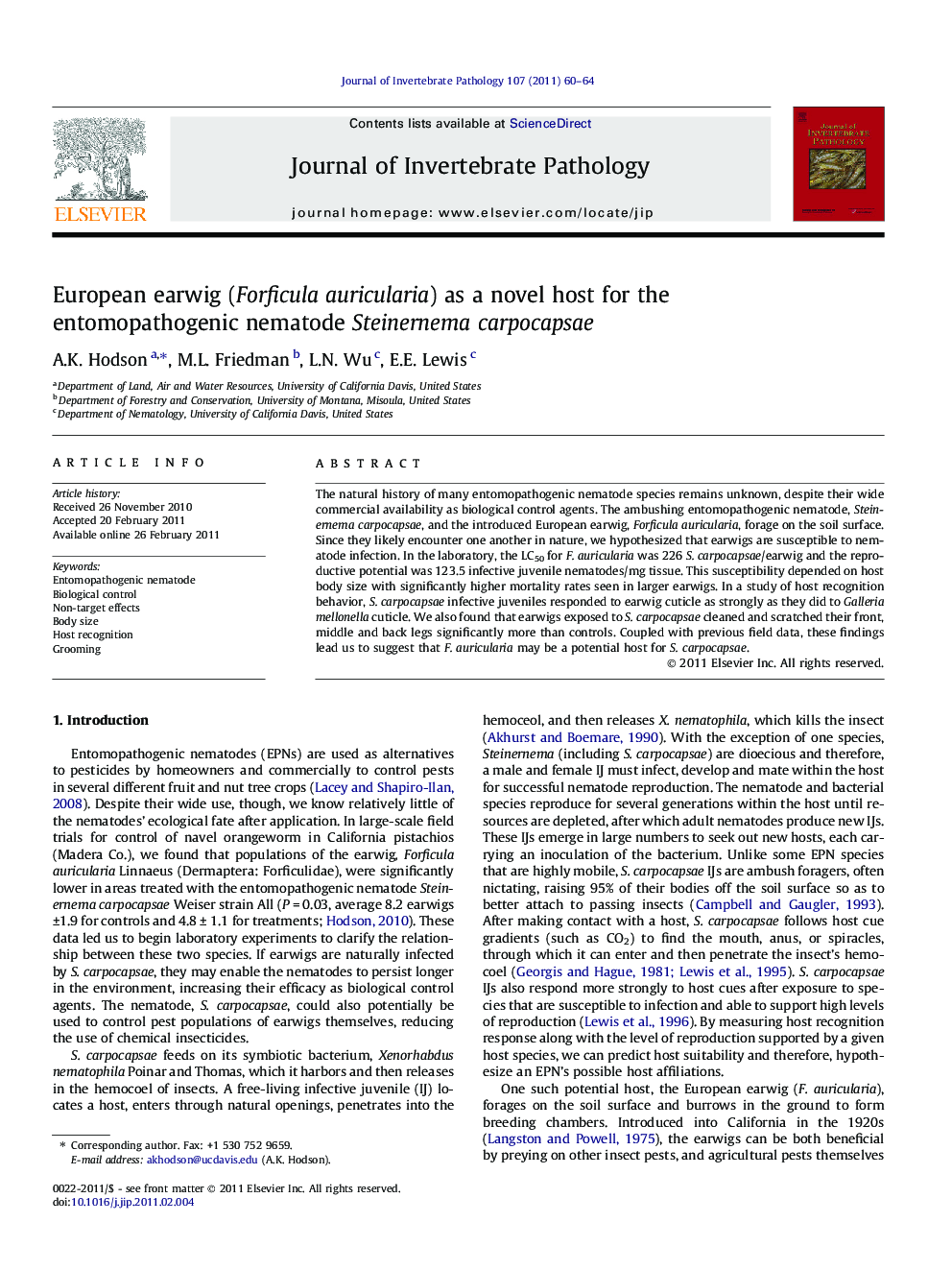| Article ID | Journal | Published Year | Pages | File Type |
|---|---|---|---|---|
| 4557995 | Journal of Invertebrate Pathology | 2011 | 5 Pages |
The natural history of many entomopathogenic nematode species remains unknown, despite their wide commercial availability as biological control agents. The ambushing entomopathogenic nematode, Steinernema carpocapsae, and the introduced European earwig, Forficula auricularia, forage on the soil surface. Since they likely encounter one another in nature, we hypothesized that earwigs are susceptible to nematode infection. In the laboratory, the LC50 for F. auricularia was 226 S. carpocapsae/earwig and the reproductive potential was 123.5 infective juvenile nematodes/mg tissue. This susceptibility depended on host body size with significantly higher mortality rates seen in larger earwigs. In a study of host recognition behavior, S. carpocapsae infective juveniles responded to earwig cuticle as strongly as they did to Galleria mellonella cuticle. We also found that earwigs exposed to S. carpocapsae cleaned and scratched their front, middle and back legs significantly more than controls. Coupled with previous field data, these findings lead us to suggest that F. auricularia may be a potential host for S. carpocapsae.
Graphical abstractAfter exposure to Forficula auricularia cuticle, Steinernema carpocapsae was nearly as responsive to host cues as after exposure to the cuticle of Galleria mellonella, a known standard host. This similarity in behavioral response indicates that S. carpocapsae can recognize European earwigs as a host. Nematodes responded significantly less to a negative control (Parafilm).Figure optionsDownload full-size imageDownload as PowerPoint slideHighlights► In the laboratory, the LC50 for F. auricularia was 226 S. carpocapsae/earwig. ► The reproductive potential was 123.5 infective juvenile nematodes/mg tissue. ► Susceptibility depended on host body size. ► Infective juveniles responded strongly to earwig cuticle. ► Exposed earwigs groomed more than controls.
